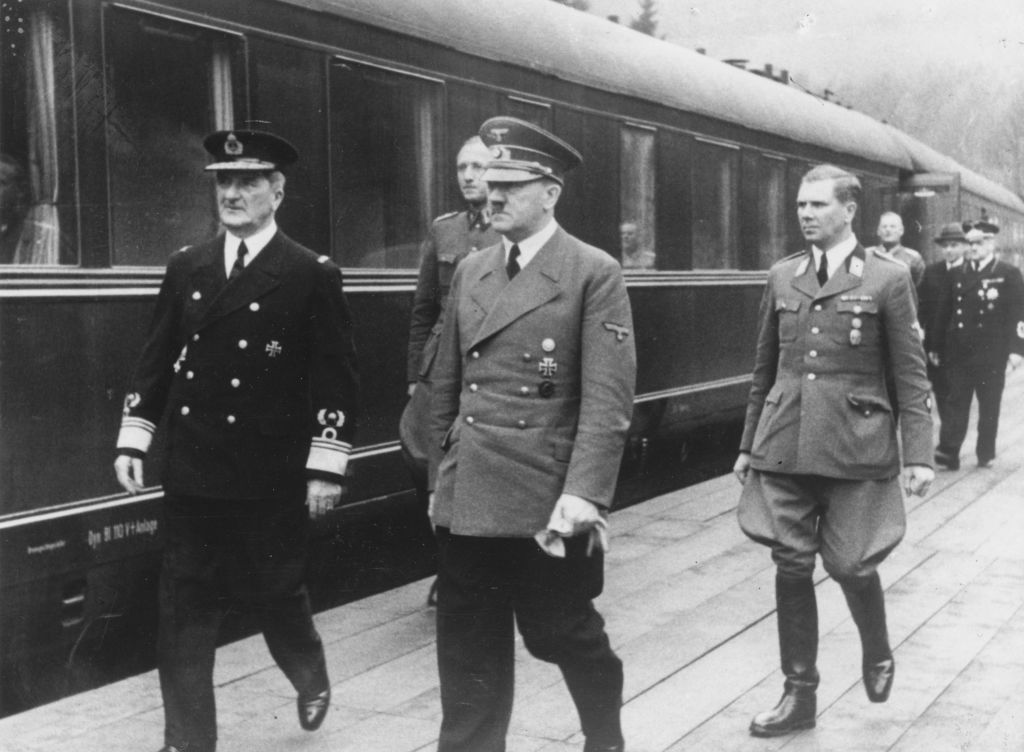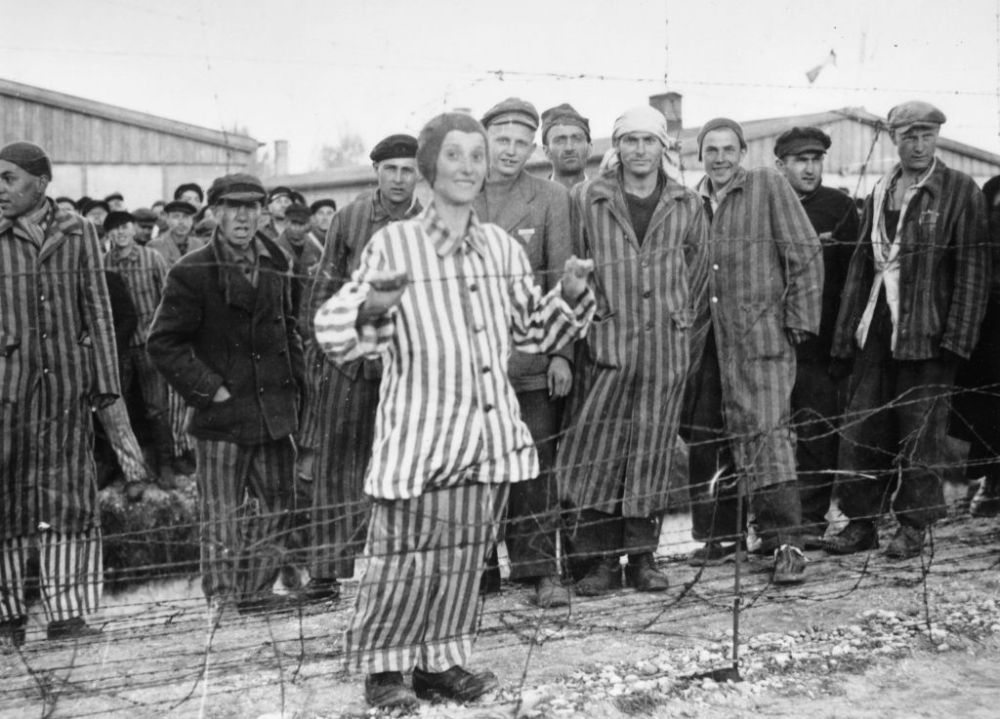One day in May 1944, in the Nagyvárad ghetto, Sándor Leitner saw an elderly man struggling to walk towards him. His face was swollen from beatings and he was barely able to stand. It was his father, returning from his interrogation by the Gendarmes. The Nagyvárad ghetto (now Oradea in Romania) was the largest in Hungary. Around 27,000 Jews were incarcerated there before being deported to Auschwitz. Leitner, a senior community leader, escaped to Budapest and survived the Holocaust. His post-war account of the fate of his fellow Jews is one of the most detailed eyewitness accounts of the savagery of the ghettoisation and deportations.
When the traumatised newcomers arrived in Budapest they were incredulous to see Jews still live openly, shopping for kosher food, celebrating Jewish holidays
Between ten and fifteen people were crammed into each room, starving, fearful, lacking water and medical care. But the true horror began on 10 May when Jenő Péterffy, a lieutenant colonel in the Gendarmerie, took control. Péterffy commanded a special unit of 40 gendarmes, working with local police. The unit set up a torture chamber inside the nearby Dreher brewery to discover where the local Jews had hidden their valuables. The torturers of Nagyvárad were not rogue officers or criminal chancers, but state officials. They enjoyed their work. Each prisoner was beaten by four to five gendarmes at a time, noted Leitner, ‘rushing at him, shoes, clothing, underwear would soon be torn from him, two of them would beat the heels, two others the hands, arms and other parts of the body and the head would not be spared’. Leitner asked one of those who had been tortured with electric shocks to describe the process. A cable was tied around the victim’s left wrist, while a piece of iron, which delivered the charge, was pressed into the ‘head, heart, sexual organs, thigh, shank, heel’. The pain was unbearable, said the victim. ‘My brain turns out, my heart leaps into the throat’.
The last deportation train left Oradea on 3 June. The procedure was well-honed. The women were internally examined to see if they had hidden valuables inside their vaginas. Gendarmes robbed the Jews of their last items of jewellery. They forced them into cattle trucks. There was a bucket for a toilet and no food or water. Some of the elderly died on the journey. Others lost their mind or committed suicide with poison. The journey took three days. When the train arrived at Auschwitz, the Jews, dazed, starving, exhausted, ravaged by thirst, spilled out of the wagons onto the ramp. The young and strong were selected for labour, the rest were sent to the gas chambers. Nagyvárad’s Jewish community, and those of its surrounds, were no more.
This year marks the 80th anniversary of the Hungarian Holocaust. Tuesday marked the Day of Remembrance for Hungarian Holocaust victims. Kaddish, the Jewish prayer for the dead, was recited in Parliament. As anti-Semitism soars around the world, remembering the Nazi genocide is more important than ever, say Hungarian officials. Throughout this year, the government and Jewish community plan an extensive, well-funded programme of commemorative events. Distance brings perspective and ever more detailed knowledge. Countless studies, books, conferences, memoirs, academic papers and documentaries have catalogued the genocide. Yet the more we know, the more incomprehensible the destruction of Hungarian Jewry seems. By summer 1944 it was clear that the Nazis had lost the war. On 6 June, D-day, Allied troops landed in France. The Russians were advancing from the east. Shifting front lines aside, why would any country willingly send more than 5 per cent of its population to be exterminated?

Ruled by the ageing Regent Miklós Horthy, Hungary joined the Axis in November 1940. Hungarian troops had invaded northern Yugoslavia to reclaim lands lost at the Treaty of Trianon in 1920 and joined the Germans to invade the Soviet Union. Horthy was an anti-Semite, with particular disdain for Hungarian Jews originally from Poland and Russia whom he regarded as eastern interlopers. But his anti-Semitism, unlike Hitler’s, was not genocidal. Horthy was neither a Nazi or a fascist, but an authoritarian conservative nationalist. He loathed the Arrow Cross, the Hungarian Nazis, and detested Hitler, so much that when they met he wore white gloves so as to avoid skin contact. About one in four of Budapest’s population was Jewish, or of Jewish origin. The city’s Jews were so entwined into the fabric of daily life that anti-Semites dubbed the capital ‘Judapest’. Horthy often socialised with the leaders of Hungary’s great Jewish industrial and business dynasties, regarding them as ‘honorary Magyars’.
Three anti-Jewish laws and numerous decrees had drastically restricted the rights of the Jewish population, including one that forbad sexual relations between Jews and non-Jews. Tens of thousands of Jewish men perished on forced labour for the army, sometimes at the hands of their own officers. In summer 1941, 18,000 mainly-foreign born Jews had been deported to Ukraine and massacred by the SS. But that was not repeated. Hungary was a police state, complete with basement torture chambers, but its citizens still enjoyed more freedoms than those of the Third Reich or fascist Italy. The country remained a comparatively safe haven for its Jews – and thousands of Jewish refugees from neighbouring countries. When the traumatised newcomers arrived in Budapest they were incredulous to see a city where Jews still lived openly, shopping for kosher food, celebrating Jewish holidays, their clothes without yellow stars, while traffic policemen calmly directed the cars around the Great Synagogue on Dohany street. Again and again Horthy and his governments refused Hitler’s demands to deport Hungary’s Jews. Throughout much of 1943, Horthy’s emissaries negotiated with the Allies about the terms of a future surrender. Many in Hungary hoped – even believed – that the British and Americans would soon land in Yugoslavia. They would liberate Hungary and it would join the Allies.
But the Allies did not come and on the morning of 19 March, 1944, the Germans did. Operation Margarethe, the Nazi invasion of Hungary, went without a hitch. There was almost no resistance. The first train to Auschwitz left Kistarcsa, on the outskirts of Budapest, at the end of April, its passengers mainly notable Jews from Budapest. The mass deportation of the Jews from the countryside and provincial towns began on 14 May and continued until 9 July. In that time, around 437,000 Jews were sent to Auschwitz, where most were murdered on arrival. The deportations were one of the swiftest and most efficiently-organised episodes of the Holocaust, were overseen by Adolf Eichmann and a small group of Nazi officials. But they could never have taken place without Horthy’s passivity and the enthusiastic assistance of many thousands of Hungarian officials, foremost among them László Endre and László Baky, two fanatical anti-Semites.
The Nazi occupation of Hungary differed from the occupation of Poland or Bohemia. Hungary kept its own currency and government with some powers. Admiral Horthy remained as head of state, yet he stayed silent as his Jewish compatriots were sent to their deaths. The experience of other countries showed that when the Nazis met resistance to their plans, they backed down. When the Nazi round-up in Denmark began on 1 October, 1943, there were barely any Jews to be found. A nationwide rescue operation had ferried 8,000 Danish Jews and their relatives to Sweden. The Danish authorities, including the police, simply refused to cooperate with the Germans. The contrast with Hungary could not be sharper – or darker. The sins were of omission as well as active collaboration – in particular the failure of the churches to take a strong, public and unified stand against the ghettoisation and deportations, which resumed in November 1944. By the end of the war at least 565,000 Hungarian Jews had been murdered. As István Deák, the late Hungarian historian noted, the deportation of Hungary’s Jews was ‘probably the smoothest administrative operation in Hungarian history’.
The history of Hungarian Jewry might have been very different
Horthy claimed in his memoir that after the Nazi occupation he was initially powerless. ‘For a long time I was helpless before German influence, for, in Budapest and its vicinity, I lacked the means to check or thwart the joint actions of the Germans and the Ministry for Home Affairs.’ This is not true. Horthy had both the means and the stature to do so. He had ruled Hungary since 1920, an impressive record during a turbulent era. For all his flaws, Horthy had kept Hungary unified and stable. Unlike Czechoslovakia or Poland, the country still existed in a meaningful sense. He was immensely respected. Horthy could have rallied the anti-Nazi forces. He could have simply refused to cooperate with the Germans, refused to form a new government and issued orders for the army to resist. Instead he turned his face to the wall and his back on Hungary’s Jews.
Horthy’s defenders argue that he saved the Jews of Budapest, the last surviving community. By early July, Baky and his henchmen were plotting a coup, using the Gendarmes. Once in power they would deport the Budapest Jews. Baky planned to deploy Jenő Péterffy, the butcher of Nagyárad. Horthy could no longer claim ignorance of the fate of those deported. He had received a copy of the Auschwitz Protocol, a detailed account of the death camp and its operation, written by two escaped prisoners. Warned by President Roosevelt that if the deportations continued he would eventually be tried as a war criminal, Horthy finally took action. He ordered the Gendarmes to leave the capital and deployed loyalist soldiers to take control of the streets. The deportations ended. Baky’s coup attempt was over before it began. The Jews of Budapest were saved – at least until the SS and Arrow Cross took power in October 1944. Horthy’s actions that July were commendable. But they also highlight his passivity and complicity in the previous months. Had Hungary’s leader acted as decisively in March or April, the history of Hungarian Jewry might have been very different.







Comments
Comments will appear under your real name unless you enter a display name in your account area. Further information can be found in our terms of use.